Explore
Somatic Experiencing
Embark on a Journey Within: Discover Healing and Empowerment Through Somatic Experiencing.
Somatic Experiencing Services
A.
Understanding Somatic Experiencing:
Somatic Experiencing, developed by Dr. Peter Levine, is a transformative body-based practice aimed at cultivating a harmonious relationship between clients and their bodies. This process effectively deactivates trauma, addressing fight, flight, and freeze states held within the body. Clients benefit from a gradual unfolding of their bodily experiences, fostering trust in their innate wisdom and personal histories.
B.
Benefits of Somatic Experiencing:
This therapeutic approach yields a spectrum of benefits, including decreased pain, deeper self-connection, reduced anxiety, depression, and trauma symptoms, improved digestion and sleep, alleviated tension and headaches, and an overall increased sense of comfort and peace. The pace of a Somatic Experiencing session is deliberately slow, allowing clients to communicate their sensations, preferences for areas of focus, and emerging feelings.
C.
Tailored Sessions and Professional Certification:
Somatic Experiencing sessions, whether conducted sitting in a chair, on a massage table with touch, or in supported yoga poses, offer a personalized and client-centered approach. Lakshmi, is a Somatic Experiencing Practitioner and brings expertise and dedication to each session. She offers 60-minute sessions for $130 and 90-minute sessions for $160, available in-person or over Zoom.
DARe & Somatic Experiencing
A.
Understanding DARe:
DARe (Dynamic Attachment Re-patterning Experience) is a therapeutic approach
developed by trauma therapist Diane Poole Heller that focuses on healing attachment wounds and developmental trauma. Rooted in attachment theory and trauma healing
modalities, DARe helps individuals resolve early childhood trauma and attachment disruptions, fostering healthier relationships and emotional well-being.
DARe and Somatic Experiencing work seamlessly together as DARe focuses on repair of early relational/attachment trauma and SE focuses on how to release stored trauma from the body and restore healthy protective responses, both essential in healing early trauma wounds.
B.
What is DARe:
What is DARe (Dynamic Attachment Re-patterning Experience)?
DARe is a therapeutic approach designed to address the impacts of early attachment disruptions, which often result from adverse childhood experiences (ACEs), neglect, or trauma in relationships with primary caregivers. According to attachment theory, secure attachment in early childhood lays the foundation for healthy emotional regulation, interpersonal relationships, and resilience. However, when attachment is disrupted due to trauma or inconsistent caregiving, individuals may develop insecure attachment styles that affect their ability to form healthy bonds and feel emotionally safe in relationships.
DARe combines attachment theory with somatic (body-based) and experiential therapy techniques to help individuals repair attachment wounds and heal the trauma that stems from insecure or disorganized attachment patterns. The core focus of DARe is to support individuals in shifting from insecure attachment styles (such as anxious, avoidant, or disorganized) to more secure, trusting relationships—both with themselves
and others.
Re-patterning the Nervous System
Much like other trauma therapies, DARe focuses on healing the nervous system, which becomes dysregulated due to early attachment trauma. Early experiences of abandonment, neglect, or inconsistent caregiving can cause the nervous system to remain stuck in states of hyperarousal (anxiety, panic) or hypoarousal (numbness, dissociation). DARe therapy uses somatic techniques to help regulate the nervous system and bring it back into balance. By guiding individuals to focus on bodily sensations and emotions in a safe, therapeutic setting, DARe helps the body discharge stored trauma and re-pattern its responses. This process allows individuals to move out of defensive attachment behaviors and into more secure, emotionally grounded ways of relating to others.
Experiential and Relational Exercises
DARe therapy includes experiential exercises that help individuals practice new ways of connecting with others in real-time. These exercises often involve role-playing, body awareness, and guided imagery, which help individuals experience what secure attachment feels like in their body and mind. The therapist may guide the individual through relational scenarios that allow them to safely explore their attachment wounds and experiment with new ways of interacting. For example, if a client has an anxious attachment style, they may practice experiencing reassurance and emotional safety during a guided exercise. The goal is to help the nervous system learn new patterns of connection, trust, and safety, ultimately leading to more secure attachment behaviors in real-life relationships.
Healing Developmental Trauma
Developmental trauma refers to trauma experienced in early childhood during critical periods of emotional and psychological development. This can include neglect, abuse, or inconsistent caregiving, which disrupts the natural process of attachment and emotional regulation. DARe therapy directly addresses developmental trauma by working to heal the early wounds that shape a person’s attachment patterns. Through somatic experiencing and attachment-focused interventions, DARe helps individuals process unresolved childhood trauma, allowing them to move past the survival strategies they developed as children and into healthier, more balanced ways of relating to themselves and others.
How Does DARe Work:
DARe uses a combination of attachment theory and somatic healing to re-pattern the nervous system and shift attachment styles. The therapeutic process in DARe involves experiential exercises, body awareness, and relational work to help individuals heal from early attachment disruptions. Here’s how it works:
00
Understanding Attachment Styles
The first step in DARe therapy is helping individuals understand their own attachment style. The four main attachment styles are:
01
Secure Attachment:
Secure Attachment: Individuals with secure attachment feel safe in relationships, trust others, and can navigate intimacy and independence with ease.
02
Anxious Attachment:
Anxious Attachment: Individuals with anxious attachment often feel insecure in relationships, fearing abandonment and constantly seeking reassurance.
03
Avoidant Attachment:
Avoidant Attachment: Individuals with avoidant attachment tend to distance themselves from others, suppressing their emotions and avoiding intimacy.
04
Disorganized Attachment:
Disorganized Attachment: This attachment style combines both anxious and avoidant behaviors and often results from early experiences of trauma, neglect, or abuse.
05
DARe Outcome
DARe helps individuals identify their attachment style and recognize how it affects their current relationships, behaviors, and emotional responses. By understanding their attachment patterns, individuals can begin to heal the underlying issues that contribute
to feelings of insecurity or disconnection in relationships.
Take a Closer Look
How Does DARe Help Heal Early Trauma?
DARe therapy is particularly effective for individuals who experienced attachment disruptions in early childhood. By focusing on both the body and the mind, DARe helps individuals resolve deeply rooted patterns of emotional pain and attachment insecurity. Here’s how DARe helps heal early trauma:
01.
Resolves Attachment Wounds
DARe helps individuals identify and heal attachment wounds from early childhood. Whether a person experienced inconsistent caregiving, emotional neglect, or abandonment, DARe therapy provides a safe space to process these experiences and release the emotional pain associated with them. This can lead to healthier, more secure attachment patterns and a greater capacity for trust and intimacy in relationships.
02.
Regulates the Nervous System
Trauma affects the nervous system, often leaving individuals in a constant state of fight, flight, or freeze. DARe therapy uses body-based techniques to help regulate the nervous system and bring it back into a state of balance. This is particularly important for individuals who experience anxiety, hypervigilance, or emotional numbness due to early trauma. By calming the nervous system, DARe supports long-term healing and emotional resilience.
03.
Shifts Insecure Attachment Patterns
Insecure attachment styles, such as anxious, avoidant, or disorganized attachment, can have lasting effects on a person’s relationships, self-esteem, and emotional well-being. DARe therapy helps individuals shift these patterns by working directly with the body and emotions. By creating new experiences of safety, connection, and trust in a therapeutic setting, individuals can re-pattern their attachment style and begin to form more secure, fulfilling relationships.
04.
Supports Emotional Healing
Early trauma often leaves individuals feeling emotionally disconnected, unworthy of love, or afraid of intimacy. DARe helps individuals reconnect with their emotions in a safe, supportive environment, allowing them to heal from the inside out. This process leads to greater self-awareness, emotional regulation, and the ability to experience deeper connection and vulnerability in relationships.
05.
Promotes Lasting Change
Because DARe works with both the body and the mind, it offers lasting change for individuals recovering from early trauma. By re-patterning the nervous system and creating new emotional experiences, DARe helps individuals break free from the patterns of insecurity, fear, and emotional pain that may have shaped their lives for years. This leads to greater emotional resilience, healthier relationships, and a deeper sense of self-worth.
Who Can Benefit from DARe?
DARe therapy is particularly beneficial for individuals who have experienced:
A.
Early childhood trauma
B.
Attachment disruptions or attachment trauma
C.
Neglect or emotional unavailability from caregivers
D.
Abuse (physical, emotional, or sexual)
E.
Insecure attachment styles (anxious, avoidant, disorganized)
F.
Relational difficulties in adulthood, such as fear of intimacy, trust issues, or emotional dysregulation
DARe can also be helpful for individuals who feel disconnected from their emotions or struggle with patterns of self-sabotage, anxiety, or depression related to early attachment wounds.
Conclusion
The Dynamic Attachment Re-patterning Experience (DARe) is a powerful therapeutic approach that helps individuals heal from early attachment wounds and developmental trauma. By combining the principles of attachment theory with somatic healing techniques, DARe supports individuals in re-patterning their attachment styles, regulating their nervous system, and building healthier, more secure relationships.
If you’re struggling with the effects of early trauma or insecure attachment, DARe therapy can offer a pathway toward emotional healing, resilience, and lasting change. Working with a trained DARe therapist can help you reconnect with yourself and others, moving you toward a more secure and fulfilling way of being in the world.


get started
Schedule Your
Consultation
Unlock the door to your transformative healing journey by scheduling a 30 minute online consultation for $80 with The Flourish Center for Somatic Healing — a personalized opportunity to discuss your unique goals and explore how our specialized services can support your path to holistic well-being. The consultation fee applies to your first appointment if you choose to work with us.
Our location
Opening Hours
Mon: 230p - 7p
Wed: 9a - 5p
Fri-Sun: 9a - 6p
Contact
Phone: +1 919 - 228 - 8856
Email: info@flourish....com
